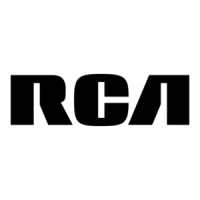FIXED-POINT
INSTRUCTIONS
INTRODUCTION
DATA
FORMAT
Halfword Fixed-Point
Number
Full-word
Fixed-Point
Number
REPRESENTATION
OF
NUMBERS
•
Using
fixed-point instructions,
binary
arithmetic
is
performed
on
operands
used
as
addresses, index quantities, counts,
and
fixed-point data.
Generally,
the
operands involved
are
32
bits
long
and
signed. One
of
the
general
registers
always holds one operand. The
other
operand
is
in
either
main
memory
or
in
a general register. Negative
quantities
are
in
the
two's-
complement form.
This
instruction
set
performs
the
following
functions:
1. loading.
2. storing.
3. comparing.
4.
shifting.
5.
sign
control.
6.
radix
conversion
of
fixed-point operands.
7. adding.
8.
subtracting.
9. mUltiplying.
10. dividing.
The
result
of
all
sign
control, compare,
shift,
add,
and
subtract
opera-
tions is reflected in
the
condition code.
• A fixed-length
format
of
a one-bit
sign
followed by
the
integer
field
makes
up
fixed-point numbers.
In
one
of
the
general
registers,
the
number
is a 31-bit
integer
field.
The
complete 32-bit
register
is occupied by
the
fixed-point
quantity
and
sign. A 64-bit operand,
with
a 63-bit
integer
field, is used
by
some shift, multiply,
and
divide instructions. A
pair
of
adjacent
registers, addressed
by
the
even
address
of
the
leftmost
register,
contains
these
longer operands. The sign-bit
of
the
rightmost
register
becomes
part
of
the
integer
field. The same
register
can be specified
for
both
operands
in
register-to-register
operations (except
for
the
Divide
instructions).
In
main
memory, fixed-point
operands
are
in
either
a 32-bit
word
or
a 16-bit halfword. The
integer
fields
are
then
either
31
bits
or
15
bits. Radix conversion operations always use
a 64-bit decimal field.
Integral
storage
boundaries
for
these
units
of
data
must
be observed. Halfword,
full-word,
or
double-word operands
are
addressed
with
one, two,
or
three
low-order
address
bits
set
to zero. Half-word
operands
are
extended to full
words
when
they
are
fetched
from
main
memory
and
used
as
a full-word
operand.
I SIGN
15-hit
Integer
0 1 15
I
SIGN
31-hit
Integer
0 1
31
• All fixed-point
operands
are
treated
as
signed integers.
True
binary
notation
with
a
sign
bit
of
zero is
the
representation
of
positive numbers.
Two's-complement notation
with
a
sign
bit
of
one is
the
representation
of
negative numbers. To
obtain
the
two's
complement
of
a number,
the
value
of
each
bit
is
changed
and
a one is added to
the
low-order hit.
123

